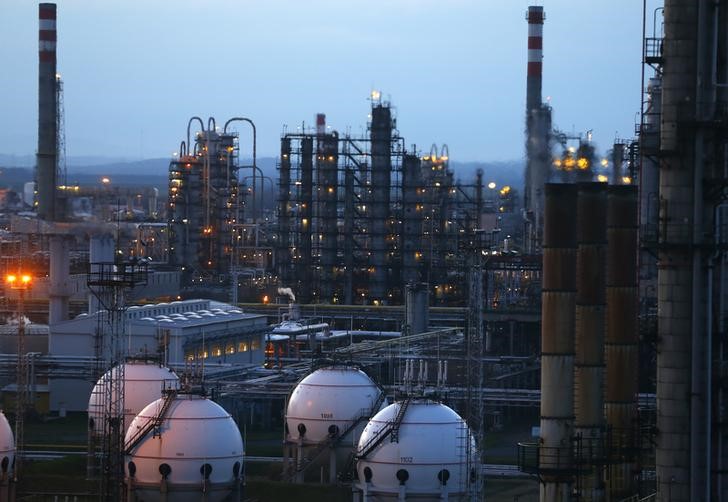By Ambar Warrick
Investing.com — Oil prices crept lower in early Asian trade on Thursday, as markets gauged the prospect of a U.S. recession against more signs of easing inflation and growing bets that the Federal Reserve will pause its rate hike cycle.
Markets were also somewhat cautious ahead of a monthly report from the (OPEC), which is expected to provide more cues on crude demand and supply after the cartel unexpectedly cut production earlier this month.
from China was also in focus, as markets sought more economic cues on the world’s largest oil importer.
Oil prices rallied on Wednesday as data showed that U.S. eased more than expected in March, which dented the dollar as markets began betting that the Fed has limited room to keep raising interest rates.
San Francisco Fed President Mary Daly also raised the possibility of fewer rate hikes by the Fed, stating that policy was at a point where rates did not need to be raised at every meeting.
But the somewhat stalled this momentum, given that they showed that policymakers were wary of a mild U.S. recession this year, in the wake of a banking crisis and as high interest rates stymie economic growth.
futures fell 0.1% to $87.11 a barrel, while futures fell 0.2% to $83.09 a barrel by 21:26 ET (01:26 GMT). Both contracts were up between 2% and 3.5% this week.
Fears of worsening economic growth battered oil prices earlier this year, as markets feared that a U.S. recession could result in weaker demand. This notion was furthered after the International Monetary Fund trimmed its 2023 global economic outlook due to the impact of higher interest rates.
The Fed is still forecast to hike interest rates at least once more in May, with indicating that markets are positioning for a June pause. But while overall U.S. inflation retreated more than expected, still remained stubbornly high, which could keep the Fed hawkish.
In addition to the inflation data, signs of improving U.S. demand also aided oil prices. While overall U.S. unexpectedly grew in the week to April 7, a bulk of this increase was driven by a release from the Strategic Petroleum Reserve (SPR).
Read the full article here




